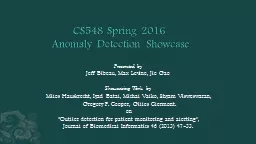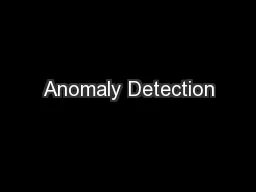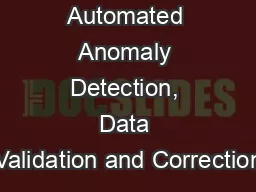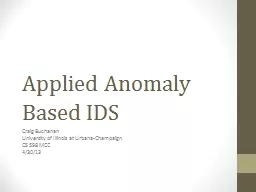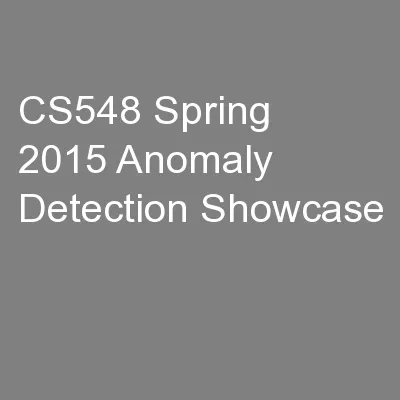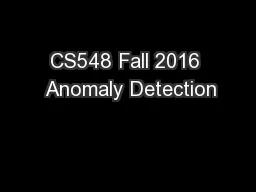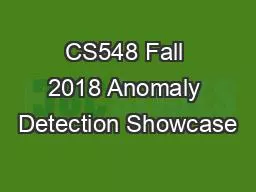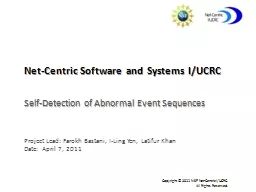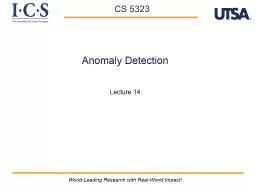PPT-CS548 Spring 2016 Anomaly Detection Showcase
Author : kittie-lecroy | Published Date : 2018-09-23
Presented by Jeff Bibeau Max Levine Jie Gao Showcasing Work by Milos Hauskrecht Iyad Batal Michal Valko Shyam Visweswaran Gregory F Cooper Gilles
Presentation Embed Code
Download Presentation
Download Presentation The PPT/PDF document "CS548 Spring 2016 Anomaly Detection ..." is the property of its rightful owner. Permission is granted to download and print the materials on this website for personal, non-commercial use only, and to display it on your personal computer provided you do not modify the materials and that you retain all copyright notices contained in the materials. By downloading content from our website, you accept the terms of this agreement.
CS548 Spring 2016 Anomaly Detection Showcase: Transcript
Download Rules Of Document
"CS548 Spring 2016 Anomaly Detection Showcase"The content belongs to its owner. You may download and print it for personal use, without modification, and keep all copyright notices. By downloading, you agree to these terms.
Related Documents

